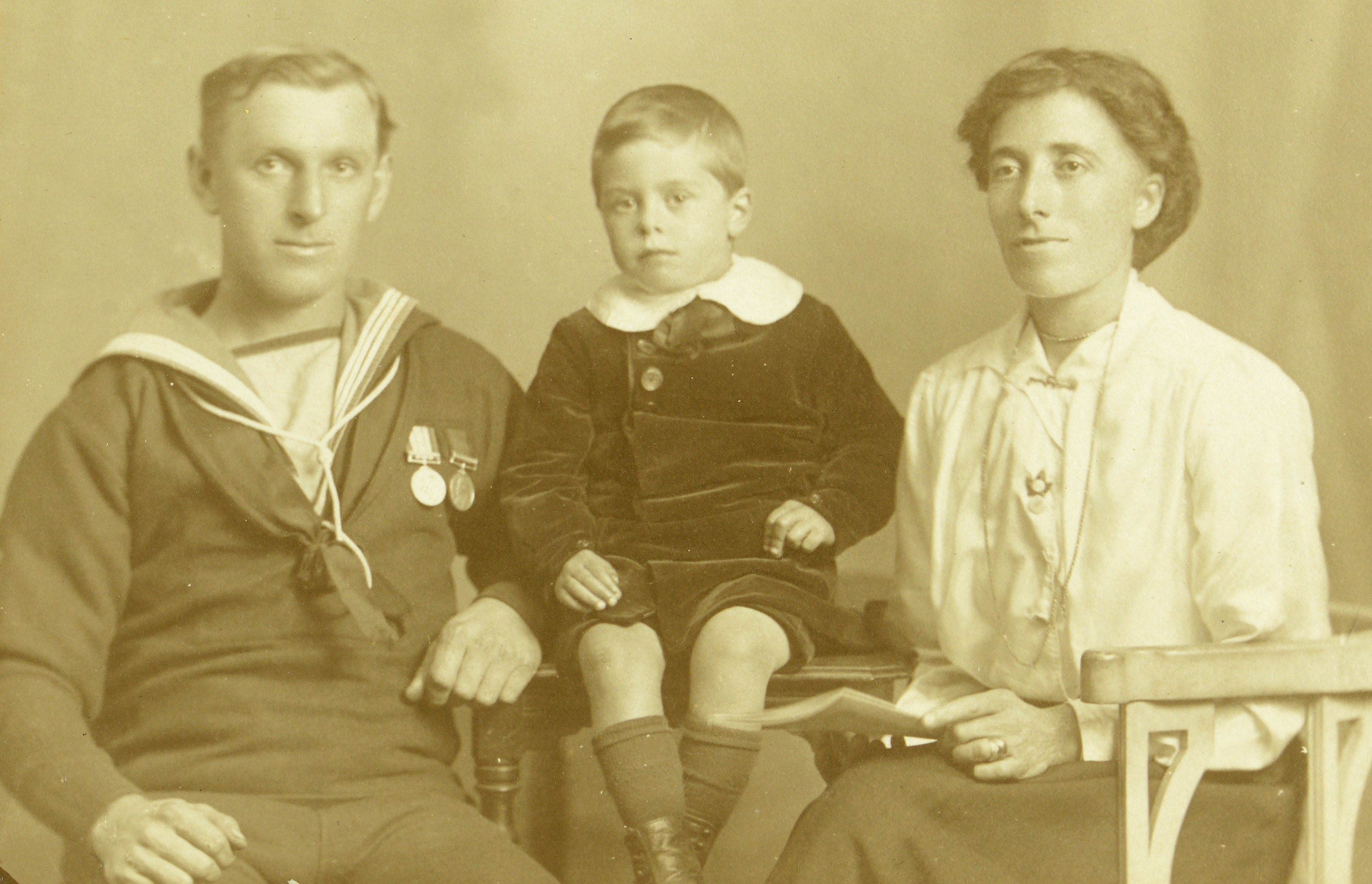An unusual Great War lifesaving D.S.M. group of seven awarded to Stoker Petty Officer S. W. Shillabeer, Royal Navy, an active witness to the costly loss of the auxiliary cruiser Otranto off Islay in October 1918 Distinguished Service Medal, G.V.R. (307666. S. W. Shillabeer, Sto. P.O. “Mounsey” North Channel, 6 Oct. 1918.); Africa General Service 1902-56, 1 clasp, Somaliland 1908-10 (307666 S. W. Shillabeer, Lg. Sto. H.M.S. Fox:); Naval General Service 1915-62, 1 clasp, Persian Gulf 1909-1914 (307666 S. W. Shillabeer, Lg. Sto. H.M.S. Fox.); 1914-15 Star (307666 S. W. Shillabeer. S.P.O., R.N.); British War and Victory Medals (307666 S. W. Shillabeer. S.P.O., R.N.); Royal Navy L.S. & G.C., G.V.R., 1st issue (307666. S. W. Shillabeer, S.P.O., H.M.S. Columbine) the earlier awards with contact wear and polished, good fine, the remainder generally very fine (7) £1,200-£1,600 --- Importation Duty This lot is subject to importation duty of 5% on the hammer price unless exported outside the UK --- --- D.S.M. London Gazette 17 March 1919 The original recommendation, for the rescue of personnel from H.M.S. Otranto, states: ‘I would like to bring to your notice the names of the following officers and men, all of whom showed the greatest coolness and entire disregard as to their personal safety, especially the men in the engine room and stokehold.’ Sidney William Shillabeer was born in Devon on 8 May 1882, and entered the Royal Navy as a Stoker 2nd Class in September 1904. Advanced to Stoker in November 1905 and to Leading Stoker in March 1908, he joined H.M.S. Fox in the following June, seeing service in the Persian Gulf and off Somaliland prior to leaving her in July 1910: earlier that year he received an allocation of prize money ‘for the capture of two Dhows by Fox in March 1909,’ A Stoker Petty Officer by the outbreak of hostilities in August 1914, Shillabeer was borne on the books of Vivid until joining the destroyer H.M.S. Opossum in August 1917, from which he removed to the Mounsey in April 1918. Loss of H.M.S. Otranto On the 6 October 1918, the auxiliary cruiser Otranto, bound from New York to Glasgow, with a crew of 360 men and some 660 American troops, collided with the P. & O. liner Kashmir off the North Coast of Islay. Both ships had acted as column leaders in Convoy HX50 and arrived in the North Channel in the midst of a violent gale and poor visibility. When land was sighted, the Officer of the Watch aboard the Kashmir correctly identified it as Islay, but his counterpart in the Otranto mistook the ground for that of Inishtrahull. In consequence, both ships turned towards each other and at 8.45 a.m. the Kashmir struck the Otranto with a fatal blow amidships on her port side. As the damaged vessels drifted apart, water poured into Otranto’s holed side, and she drifted towards the rocky coast of Islay. First to answer the stricken vessel’s S.O.S. calls was the torpedo boat destroyer Mounsey, commanded by Lieutenant F. W. Craven and crewed by such men as Stoker Petty Officer Shillabeer, shortly to be a D.S.M. The Mounsey reached the stricken liner at around 10 a.m. and, dwarfed by her rearing and plunging 12,000-ton frame, very gallantly closed her to take off survivors. On no less than four occasions the plucky little destroyer crashed against the liner’s side, each time hundreds of American servicemen jumping from the latter’s decks in an effort to reach those of the destroyer. In what must have been horrific circumstances, many of them met their death between the pitching sides of the two vessels, while others sustained serious injuries on hitting the Mounsey’s deck. At length, however, with her decks perilously overladen, the Mounsey set sail for Belfast with an astonishing 596 survivors. Tragically, at least another 400 souls remained trapped aboard the Otranto, and when she hit the bottom less than half a mile from shore, near Machir Bay, Captain Davidson gave the order to abandon ship: only 16 of these men ever reached land; Argyll Shipwrecks, P. Moir and I. Crawford, refers. Remaining a regular after the war, Shillabeer was pensioned in September 1926. Subsequently recommended for the Royal Fleet Reserve, he finally hung up his sea boots in May 1933. Sold with his original parchment Certificate of Service and three portrait photographs.









